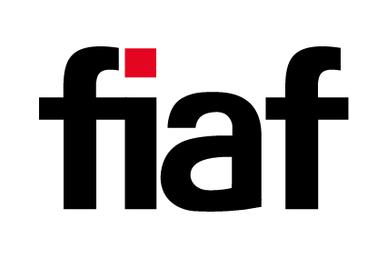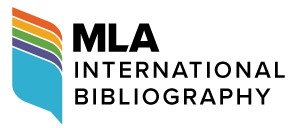Stardust: Cinematic Archives at the End of the World, by Hannah Goodwin. University of Minnesota Press, 2024, 200 pp.
Min-Kyoo Kim
[PDF]
Review
In December 2024, Elon Musk reposted on X a 1998 video, in which he predicted that the Internet would be the “be all and end all of all media”. Musk’s Starlink, launched two decades later, reflects the billionaire’s continued investment in this totalising vision; across its constellation of 7,000 satellites in space, Starlink claims to provide Internet coverage for even the remotest environments on the planet. The cosmic ascension of such media infrastructure that can now overlook the entire Earth reflects the core argument in Hannah Goodwin’s Stardust—that our age-old desire in gazing up at the stars also contains the “promise (or threat) of a revelatory celestial view from above” (13). Goodwin terms this extraterrestrial perspective as the “cosmocinematic gaze” (14), and situates it at the heart of one particular medium, that of “cinema’s potential to expose the universe, in all its sublimity and dynamism and terror, and to turn a lens back on our world too, capturing, animating, resurrecting and at times annihilating its sublime and spectral presences” (14). Goodwin thus discerns within this cosmocinematic gaze a tension between the indexical properties that enshrine the camera as a peerless instrument of observation and documentation, and its (ab)use as what Donna Haraway has elsewhere identified as “the conquering gaze from nowhere” (581), facilitating the power of mass surveillance, or even destruction, over the planet. To reformulate Musk’s earlier prediction, Goodwin’s cosmocinematic gaze emerges as the true “be all and end all of all media”. Goodwin distils the stakes of these divergent impulses of cinematic technologies into a single question, which opens the book: “(w)hat archives of humanity will exist after the end of the world?” (1).
Stardust begins with the claim that cinema has long been framed as a “cosmic medium” (1). Goodwin indicates how the logos of Universal, Disney and other major Hollywood studios—often the first images we see in the artificialised night of the movie theatre—are adorned with stars that signal our transition to the diegesis of the film. Goodwin’s move towards these paratextual elements of film echoes a similar strategy in Tiago de Luca’s Planetary Cinema: Film, Media and the Earth, which points to the recurrence of the globe in early film advertisements for Atlas, Gaumont and Pathé (18). Goodwin’s and de Luca’s parallel movements arrive at a similar conclusion: for Goodwin, the cosmocinematic gaze empowers a “sense of unmooring and a sense of omnipotent viewing” (3); meanwhile, de Luca observes that cinema’s planetary aspirations impelled a “self-ascribed mission to reveal the planet anew” (20). Both accounts emphasise the discursive construction of cinema as an invitation for the viewer to step into the diegesis and, in so doing, step out of their embodied or terrestrial perspective. Such outlines of how cinema can defamiliarise the planet, enabling a distant and objective view of human life upon it, does not necessarily break new ground. However, Goodwin’s contribution is novel in her evocation of the specifically cosmic language that film theorists have frequently reused to probe, and often venerate, the cinema’s capacity for defamiliarisation, from Élie Faure and Jean Epstein to Siegfried Kracauer. Moreover, Goodwin departs from the broadly unchecked optimism of these accounts, stressing how “cosmic and apocalyptic thinking are profoundly connected” (13). Cosmic storytelling, Goodwin claims, evinces a “widespread desire to preserve the past for the future, to bear witness to disaster”, even as the cosmocinematic gaze itself—through its entanglements with the military-industrial complex that the book later explores—perpetrates this world-ending destruction (15).
In Chapter One, Goodwin traces the origins of this relationship between the cosmic and the apocalyptic in early cinematic representations of new astronomical and astrophysical developments around the buildup to, and aftermath of, the First World War. Expanding beyond a narrow focus on the movie theatre, Goodwin draws upon Charles R. Acland and Haidee Wasson’s concept of ‘useful cinema’ to trace how educational films such as Die Grundlagen der Einsteinschen Relativitätstheorie (The Einstein Theory of Relativity,Hanns Walter Kornblum, 1922) circulated in nontheatrical contexts such as “classrooms, public lecture halls, entertainment cinemas and even astronomy club meetings” (41). These films not only satisfied the public appetite for the emerging scientific theories of the time; Goodwin observes how the films also addressed the existential anxieties emanating from the revelation of humanity’s diminutive presence in a God-less universe, as well as the febrile political atmosphere around the First World War that threatened to tear the world apart. Goodwin’s productive reading of Wunder der Schöpfung (Our Heavenly Bodies,Hanns Walter Kornblum, 1925) exemplifies this tension at the heart of the cosmocinematic gaze. On the one hand, a scene that playfully imagines Earth without gravity provides a “spectacular display of the medium’s mechanical and experiential possibilities” in demonstrating scientific phenomena (50). On the other hand, the film’s simulation of a star colliding with the Earth—depicted from both embodied and extraterrestrial perspectives—“allows the audience to enjoy the spectacle of our own destruction even as we dread it” (52). The film’s adoption of an omniscient, cosmocinematic gaze thus envisions the universe, and our presence within it, as comprehensible as it is ultimately precarious—a tension that is unconvincingly resolved, as Goodwin remarks, in the film’s recentring of redemptive “religious rhetoric in the face of apocalyptic dread” (58).
Cinema’s embrace of such optimism—that although the world hinges upon destruction, the cinematic archive will survive—is the purview of the following chapters. Chapter Two opens with André Bazin’s concern about the frenzied proliferation of documentaries during the Second World War, in which he distils the stakes of Goodwin’s cosmocinematic gaze: “we live more and more in a world stripped bare by film”, Bazin writes, “a world that tends to peel off its own image” (61). Tellingly, for the sake of Goodwin’s argument, Bazin describes the “craze of war reports” as unfolding on a “cosmic scale” (60). Goodwin takes this cue literally to consider how aerial footage during the Second World War entwined the divergent impulses of the cosmocinematic gaze as a form of both documentation and destruction; she exemplifies this material entanglement through the innovation of the camera gun, which enabled fighter pilots to take photographs of their targets on the ground (73). Through her subsequent survey of wartime propaganda films from Great Britain, Goodwin identifies the construction of the sky as “home to the cosmocinematic gaze of some celestial witness—whether benevolent or linked to new and violent technologies of surveillance” (67). However, the proliferation of celestial witnessing in such films was far from all-seeing; Goodwin observes how a film like Target for Tonight (Harry Watt, 1941), a docufiction that celebrates the RAF’s bombing raids, only represented a “sliver of the scene below” (78), underscoring the abstracted and dehumanised perspective of the militarised cosmocinematic gaze. In other words, the cosmocinematic gaze of such propaganda records—and reveres—the airborne perpetration of violence, while leaving the actual consequences of this violence beyond the frame of representation. Organising and cohering this wartime footage into a palatable narrative, therefore, relied precisely upon the incompleteness of the cosmocinematic gaze.
Within this same chapter, Goodwin also explores how the feature films Dangerous Moonlight (Brian Desmond Hurst, 1941) and A Matter of Life and Death (Michael Powell and Emeric Pressburger, 1946) address this question of the incomplete archive. While both films ostensibly shore up the transatlantic bond between the US and Great Britain, they also exhibit a new and special relationship between the figure of the fighter pilot and time itself. As Goodwin illustrates, the films situate their airborne protagonists both at the apex of human progress and on the precipice of apocalypse—an irreconcilable tension that results in the characters’ “individual mental breakdown” (79). It is worth adding to Goodwin’s analysis of this mise-en-scène of the airplane that Oppenheimer (Christopher Nolan, 2023) concludes with the titular scientist’s nightmarish vision of being inside a cockpit, looking out onto a future of nuclear conflict. Oppenheimer thus joins the airborne pilots of Dangerous Moonlight and A Matter of Life and Death in their disorientation between past, present and future, an ambiguity that eschews Target for Tonight’s construction of the heavens as a temporally stable vantage point over the planet. Moreover, Goodwin highlights the use of music in Dangerous Moonlight and A Matter of Life and Death as critical to destabilising the certitude of a distant, celestial witness, “counterbalancing the objective knowing that pervades the military rhetoric surrounding aerial vision” (91). Goodwin notes that this transcendental force of music evokes “what lies at the limits of visual representation”, gesturing towards—but never fully grasping—“the reality of what the apocalypse of war means at a human level” (91). In so doing, Goodwin concludes that these films undermine the promise of an all-knowing cosmocinematic gaze, negating the possibility of a comprehensive archive.
Chapter Three further probes the limits of the cosmocinematic gaze in mediating the apocalypse, by exploring how experimental filmmakers responded to the advent of the Atomic Age. Citing Akira Mizuta Lippit and Paul Virilio’s reflections on the blinding atomic light of nuclear weapons, Goodwin establishes the challenge facing post-war filmmakers as “a crisis of representation” in which earlier aesthetic strategies were not only technically insufficient, but also—as evidenced in the RAF films of Chapter Two—often complicit with practices of mass destruction (94). Goodwin’s central protagonist in the chapter, navigating these aesthetic and ethical complexities, is Maya Deren, singled out as the “forefront of avant-garde filmmaking” in postwar America (102). As with her treatment of Bazin, Goodwin illuminates the specifically cosmic language in Deren’s writing on film. The Deren that subsequently emerges through Goodwin’s framing is one directly concerned with the cosmic turbulence of the Atomic Age, and deeply critical of how science had supplanted art to become the “dominant creative force” in society (104). For Deren, it was of paramount importance that art redeemed itself through an immersion in—and not disavowal of—this experimental zeitgeist of the postatomic moment. Goodwin thus relays Deren’s catalogue of cinematic techniques—such as slow-motion and time lapses—that could embrace the cosmic disorientation of the Atomic Age, while also articulating a political critique of the “godlike creative and destructive force” now at humanity’s disposal (121). And so, Deren’s idealised cosmocinematic gaze would be “intentionally relativistic, partial, assembled and incomplete” (121).
Although Deren provides the theoretical impetus for this chapter, Goodwin relies upon Bruce Conner’s A MOVIE (1958) and Crossroads (1976) to envision what this critical subversion of the cosmocinematic gaze might actually look like. The bridging of these two luminaries of the American avant-garde perhaps runs the risk of overshadowing Conner’s own account of his motivations and strategies for recycling images of US nuclear testing. That said, Deren’s formulation of an intentionally relativistic and partial cosmocinematic gaze clearly resonates with Conner’s experimental, and otherwise often confounding, work. In a compelling reading of A MOVIE, Goodwin argues that Conner’s recontextualisation of atomic test footage—spliced between seemingly unrelated images of everyday life—resists any coherent message or narrative, and in so doing, “testifies to the fragmentary nature of the world more aptly than any documentary could” (112). Goodwin thus demonstrates the irony of how Conner’s precise disavowal of an omniscient perspective enlightens our understanding of an irrevocably fractured and precarious world in the Atomic Age.
Goodwin’s epilogue effectively serves as a fourth chapter that extends her insights on the cosmocinematic gaze into contemporary visual culture that, perhaps more than at any previous point, obsesses over images of apocalypse. Through the examples of Melancholia (Lars von Trier, 2011) and Don’t Look Up (Adam McKay, 2021), Goodwin discerns a continued investment in the idea of an archive that can adopt a perspective “beyond any possible human, mortal gaze” (136) and even outlast the apocalypse. Concluding the book with a reading of Nostalgia for the Light (Patricio Guzmán, 2010), Goodwin attempts to reconcile this enduring valorisation of the cosmocinematic gaze with more critical perspectives that indicate the hubris, and inevitable incompleteness, of such claims to omniscience. Set in the Atacama Desert, Nostalgia for the Light interweaves the stories of those searching for the remains of those killed under the Augusto Pinochet regime and a team of astronomers working to understand the planet’s origins in deep time. Guzmán’s film emphasises how both groups in the desert pursue the material traces of a past that appears to elude them; reflecting on this shared endeavour, a woman searching for the bones of her brother ruminates: “I wish the telescopes could see through the earth so we could find them […] I’m just dreaming”. For Goodwin, this woman’s dream of the cosmocinematic gaze—if not its actual materialisation—is worth redeeming. Although neither film nor astronomy can fully recreate the past, Goodwin concludes that the imagination of the cosmocinematic gaze is what confronts us with the reality of humanity’s always-incomplete archive, the fact that we will always face “depths of the unknown, whether the dark recesses of the universe or the shadows of hidden histories” (141).
Through the original and versatile framework of the cosmocinematic gaze, Stardust provides an illuminating insight into the enduring cosmic discourse of film theory and practice, from early cinema to the latest Netflix streams. Goodwin’s contribution, however, is more than just evocative, as she evaluates both the promises and indeed, mortal dangers of this cosmocinematic gaze. This analysis culminates in Goodwin’s epilogue, which does not simply reject the cosmocinematic gaze, but sensitively redeems it as that which confronts us with irremediable loss and the absences of an incomplete archive. Perhaps fittingly for a book that embraces the partial testimony of this cosmocinematic gaze, there are certain areas that Goodwin could expand upon. For example, after the introduction signals how the cosmic framing of cinema has pervaded non-Western film, the subject of World Cinema recedes as the book comes to centre on filmmaking from the US and Britain. In Chapter Two, Goodwin could have justified this focus by further speculating on the link between the imperial powers’ hegemonic aspirations and the prevailing cosmocinematic gaze of their wartime cultural production. Beside this question of the international and imperial, there could be additional emphasis on the literal, geological connections between the cosmos and the cinema; particularly in Chapter Three, Goodwin’s insights into the nuclear test films could be productively read alongside Siobhan Angus’s Camera Geologica: An Elemental History of Photography, which discusses the cosmic origins of the uranium that furnishes the fissile material—and the subsequent atomic light—of nuclear weapons. It is perhaps not mere serendipity that these books emerged within months of each other; while Goodwin turns to the stars, Angus inspects the history of photography from the subterranean perspective of the mine. Looking up and down in a moment of political and ecological turmoil, these works not only attempt to understand the origins of image-based media, but also to contemplate on what such media will be able to preserve of our presence on the planet.
References
1. Acland, Charles R., and Haidee Wasson. Useful Cinema. Duke UP, 2011.
2. Angus, Siobhan. Camera Geologica: An Elemental History of Photography. Duke UP, 2024.
3. Bazin, André. “On Why We Fight: History, Documentation, and the Newsreel.” Translated and edited by Bert Cardullo, Film & History, vol. 31, no. 1, 2001, pp. 60–62, https://doi.org/10.1353/flm.2001.a400679.
4. Crossroads. Directed by Bruce Conner, 1976.
5. de Luca, Tiago. Planetary Cinema: Film, Media and the Earth. Amsterdam UP, 2022.
6. Dangerous Moonlight. Directed by Brian Desmond Hurst, RKO Radio British Productions, 1941.
7. Die Grundlagen der Einsteinschen Relativitätstheorie [The Einstein Theory of Relativity]. Directed by Hanns Walter Kornblum, Colonna-Film GmbH, 1922.
8. Don’t Look Up. Directed by Adam McKay, Netflix, 2021.
9. Haraway, Donna. “Situated Knowledges: The Science Question in Feminism and the Privilege of Partial Perspective.” Feminist Studies, vol. 14, no. 3, 1988, pp. 575–99, https://doi.org/10.2307/3178066.
10. A Matter of Life and Death. Directed by Michael Powell and Emeric Pressburger, Eagle Lion Films, 1946.
11. Melancholia. Directed by Lars von Trier, Magnolia Pictures, 2011.
12. A MOVIE. Directed by Bruce Conner. 1958.
13. Musk, Elon [@elonmusk]. “The crazy thing is they thought I was crazy for stating this super obvious prediction.” X, 10 Dec. 2024, 6:15 a.m., x.com/elonmusk/status/1866366196146442586.
14. Nostalgia for the Light. Directed by Patricio Guzmán, Icarus Films, 2010.
15. Oppenheimer. Directed by Christopher Nolan, Universal Pictures, 2023.
16. Wunder der Schöpfung [Our Heavenly Bodies]. Directed by Hanns Walter Kornblum, UFA, 1925.
17. Target for Tonight. Directed by Harry Watt, Crown Film Unit, 1941.
Suggested CitationKim, Min-Kyoo. “Stardust: Cinematic Archives at the End of the World,by Hannah Goodwin.” Alphaville: Journal of Film and Screen Media, no. 29–30, 2025, pp. 298–303. DOI: https://doi.org/10.33178/alpha.2930.19
Min-Kyoo Kim is a PhD candidate in Film and Screen Studies at the University of Cambridge. His doctoral project explores visual representations of nuclear violence, with a particular focus on the victimhood of racialised and colonised populations.









